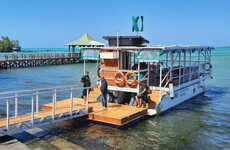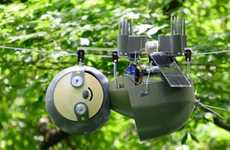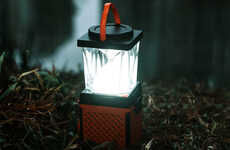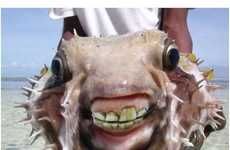
The Elysia Chlorotica is a Photosynthetic Sea Slug
Katie Cordrey — January 18, 2010 — Eco
References: sbe.umaine.edu & sciencenews.org
Scientists have discovered an American species of sea slug that that resembles a dark green leaf and can use solar power after harvesting algae chloroplasts. Elysia Chlorotica is found in waters off the U.S. east coast and feeds on algae called Vaucheria litorea in order to harvest its chloroplasts.
Implications - As the world continues to advance technologically and scientifically, the existent of new creatures are found. This further proves theories of how species adapt to newer habitats and changes. Solar-powered sea slugs, for instance, live in the water and thrive off of eating algae, ensuring survival.
The latest discover brings understanding to how the slug uses chloroplasts to capture the sun’s energy for food.
Implications - As the world continues to advance technologically and scientifically, the existent of new creatures are found. This further proves theories of how species adapt to newer habitats and changes. Solar-powered sea slugs, for instance, live in the water and thrive off of eating algae, ensuring survival.
The latest discover brings understanding to how the slug uses chloroplasts to capture the sun’s energy for food.
Trend Themes
1. Solar-powered Sea Creature - The discovery of the Elysia Chlorotica showcases the potential for solar-powered sea creatures that can harvest energy from algae.
2. Marine Solar Energy - The study of Elysia Chlorotica sheds light on the potential for marine photosynthesis as an alternative energy source.
3. Adaptation of Sea Life - The discovery of Elysia Chlorotica highlights the adaptability of sea life to changing environments and the potential for new biological innovations.
Industry Implications
1. Renewable Energy - The study of Elysia Chlorotica could lead to new developments in renewable energy, particularly in marine environments.
2. Marine Biology - The discovery of Elysia Chlorotica offers new insight into the mechanisms and adaptations of marine life, advancing the field of marine biology.
3. Biotechnology - The use of Elysia Chlorotica as a model for solar power harvesting in biological systems could lead to new innovations in biotechnology and bioengineering.
4.4
Score
Popularity
Activity
Freshness















